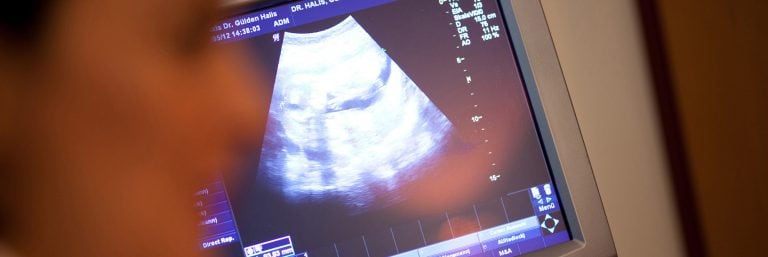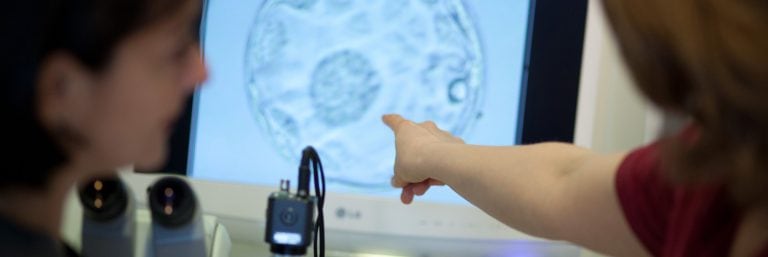Involuntary childlessness and myomas
Due to the demographic development in Germany, the topic of “uterus myomatosus” also affects many patients who wish to have children, as the desire to have children is increasingly becoming an issue of women over the age of 30.
In the 35+ age group alone, 40% of these women are suspected of having a fibroid. Both fibroids and their treatment can influence pregnancy.
Can fibroids make you infertile?
In most cases, it is possible to get pregnant even with fibroids. However, it may be more difficult. It is easy to imagine that a large myoma in the uterine cavity takes away the space for the fertilised egg to implant. This can impair fertility, for example by deforming the uterus, putting pressure on fallopian tube ducts or the cervix, and by disturbing the blood supply to the lining of the uterus. This can make it difficult for the egg and sperm to meet. In addition, heavy bleeding and inflammatory processes create additional obstacles to the implantation of the fertilized egg in the uterine lining. The location and size of the fibroid(s) is decisive for the influence on fertility.
In general, it can be assumed that
- submucosal fibroids may affect fertility.
- intramural fibroids may possibly affect the ability to become pregnant and may interfere with carrying the pregnancy to term.
- subserous fibroids do not affect fertility.
The size of the fibroid(s) and the number of fibroids affect fertility and can be a problem in carrying a pregnancy to term. The risk of miscarriage may increase.
Myoma therapy for infertility
If there is a desire to have children, the uterus (womb) and the endocrine organs (ovaries) should not be damaged if possible. Despite all surgical competence, it can be useful (depending on the age of the woman, location and size of the myoma nodes) to include medication for myoma treatment (see below) in the overall concept of fertility treatment. Drug therapy can reduce the size of the fibroids and thus make it possible to remove the fibroids with less risk. Despite all preference for a non-surgical, conservative therapy, the side effects and risks of the medication must be discussed with the patient.
Pregnancy & childbirth with fibroids
In about 30% of women, the existing fibroids grow during pregnancy. In most cases, fibroids do not play a role in the course of delivery. If the birth canal is blocked, a caesarean delivery is indicated. Removal of a fibroid during pregnancy will rarely be indicated. Pedunculated subserosal fibroids are the exception. During a caesarean section, existing fibroids cannot be removed “just like that”. Unpleasant intraoperative bleeding from the wound bed could be the consequence.




